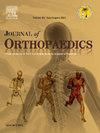美容肢体延长并发症和功能结局的meta分析。
IF 1.5
Q3 ORTHOPEDICS
引用次数: 0
摘要
身材矮小,定义为身高低于年龄和性别的第三个百分位数,影响着全球约2亿人。它会产生深远的心理影响,影响自尊、社会交往和整体生活满意度,尤其是在青少年时期。这些人经常在职业和感情生活中面临挑战,增加了他们抑郁和自杀念头的风险。手术干预,如肢体延长可以提供改变生活的结果,个人面临的心理困扰,由于身材矮小。本荟萃分析回顾了关于整容手术的文献,重点关注Paley结果和心理社会满意度,并比较了外固定(EF)和髓内钉(IMN)技术。方法:本研究遵循PRISMA指南。入选标准包括5例以上患者的研究,使用Paley分类进行结果评估,并关注EF或IMN的美容肢体延长。使用标准化表格提取PubMed的数据,并分析并发症发生率、功能结果和社会心理满意度。Paley并发症系统对问题、障碍和并发症进行分类,并使用STROBE检查表评估偏倚风险。采用JAMOVI软件进行数据综合,计算效应大小和置信区间。结果:纳入7项研究,共489例患者接受EF或IMN进行美容肢体延长。所有研究中手术相关死亡率为零。与IMN相比,EF有更高的Paley问题(56%)、障碍(48%)和并发症(10%)的发生率,IMN有37%的问题和42%的障碍,没有明显的并发症报道。患者满意度普遍较高,EF研究报告满意率高达95%。结论:EF和IMN都是美容肢体延长的可行选择。虽然EF可能会出现更多的并发症,但它保持了较高的患者满意度,而IMN提供了更安全的概况,并发症更少。一个协作的方法,结合手术选择与社会心理和精神支持,可以帮助个人实现改善的身体和情感健康。本文章由计算机程序翻译,如有差异,请以英文原文为准。
Meta-analysis of complications and functional outcomes in cosmetic limb lengthening
Introduction
Short stature, defined as height below the 3rd percentile for age and gender, affects approximately 200 million people worldwide. It can have profound psychological effects, influencing self-esteem, social interactions, and overall life satisfaction, particularly during adolescence. These individuals often face challenges in both professional and romantic lives, increasing their risk of depression and suicidal ideation. Surgical interventions such as limb lengthening can provide life-changing results for individuals facing psychological distress due to short stature. This meta-analysis reviews the literature on cosmetic stature surgery, focusing on Paley outcomes and psychosocial satisfaction, and compares external fixation (EF) and intramedullary nailing (IMN) techniques.
Methods
This study adhered to PRISMA guidelines. Eligibility criteria included studies with more than five patients, the use of the Paley classification for outcome assessment, and a focus on cosmetic limb lengthening with either EF or IMN. Data from PubMed were extracted using standardized forms and analyzed for complication rates, functional outcomes, and psychosocial satisfaction. The Paley complication system categorized problems, obstacles, and complications, and risk of bias was assessed using the STROBE checklist. Data synthesis was performed using JAMOVI software with effect size and confidence interval calculations.
Results
Seven studies were included, with a total of 489 patients undergoing EF or IMN for cosmetic limb lengthening. Procedure-related mortality was zero across all studies. EF was associated with higher rates of Paley problems (56 %), obstacles (48 %), and complications (10 %) compared to IMN, which had 37 % problems and 42 % obstacles, with no significant complications reported. Patient satisfaction was generally high, with EF studies reporting satisfaction rates of up to 95 %.
Conclusion
EF and IMN are both viable options for cosmetic limb lengthening. While EF may present more complications, it maintains high patient satisfaction, whereas IMN offers a safer profile with fewer complications. A collaborative approach, combining surgical options with psychosocial and psychiatric support, can help individuals achieve improved physical and emotional well-being.
求助全文
通过发布文献求助,成功后即可免费获取论文全文。
去求助
来源期刊

Journal of orthopaedics
ORTHOPEDICS-
CiteScore
3.50
自引率
6.70%
发文量
202
审稿时长
56 days
期刊介绍:
Journal of Orthopaedics aims to be a leading journal in orthopaedics and contribute towards the improvement of quality of orthopedic health care. The journal publishes original research work and review articles related to different aspects of orthopaedics including Arthroplasty, Arthroscopy, Sports Medicine, Trauma, Spine and Spinal deformities, Pediatric orthopaedics, limb reconstruction procedures, hand surgery, and orthopaedic oncology. It also publishes articles on continuing education, health-related information, case reports and letters to the editor. It is requested to note that the journal has an international readership and all submissions should be aimed at specifying something about the setting in which the work was conducted. Authors must also provide any specific reasons for the research and also provide an elaborate description of the results.
 求助内容:
求助内容: 应助结果提醒方式:
应助结果提醒方式:


